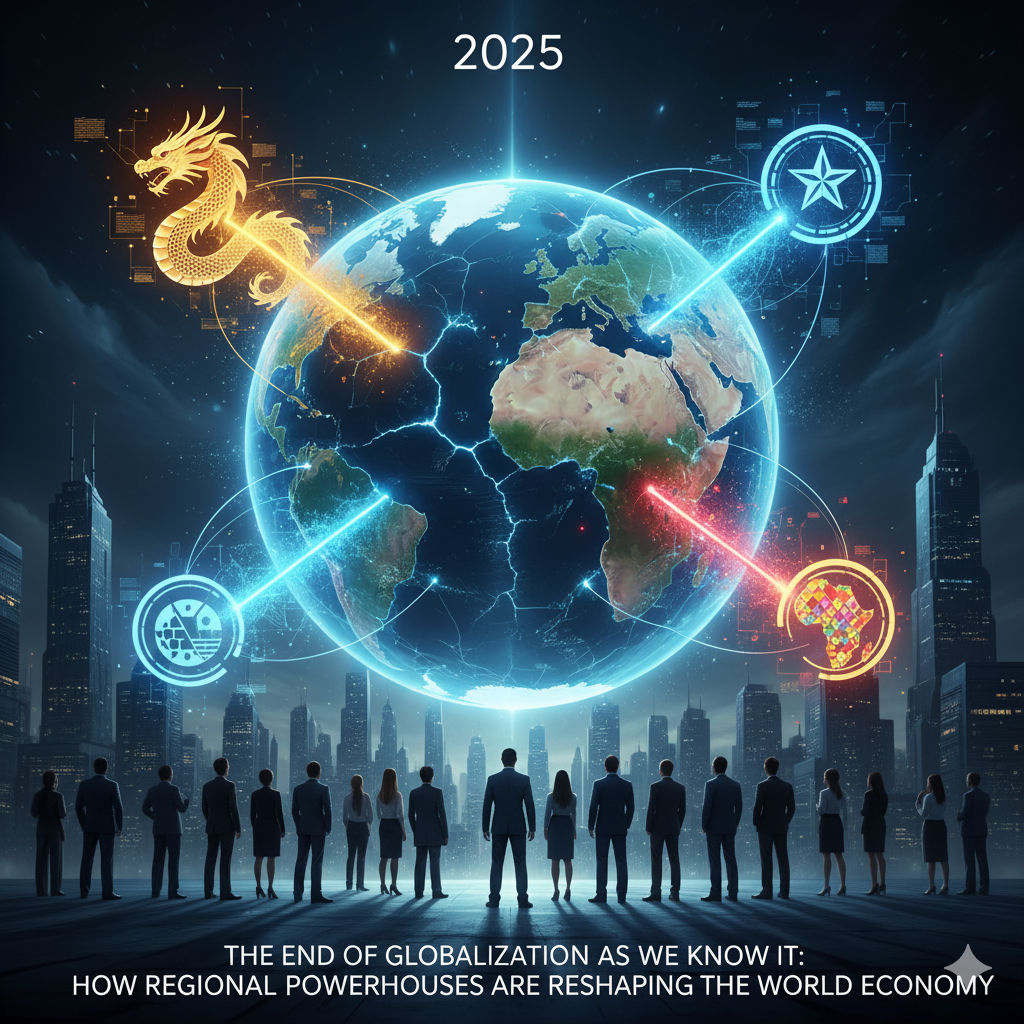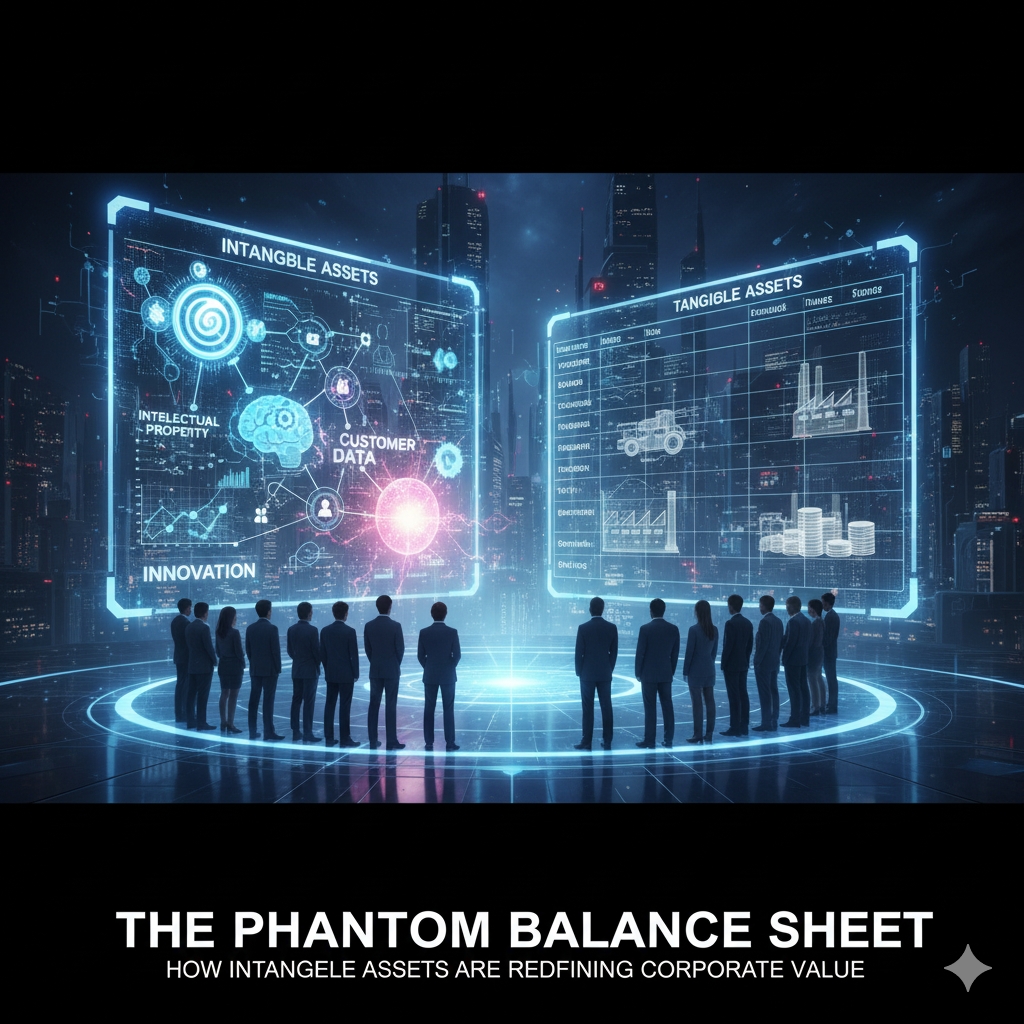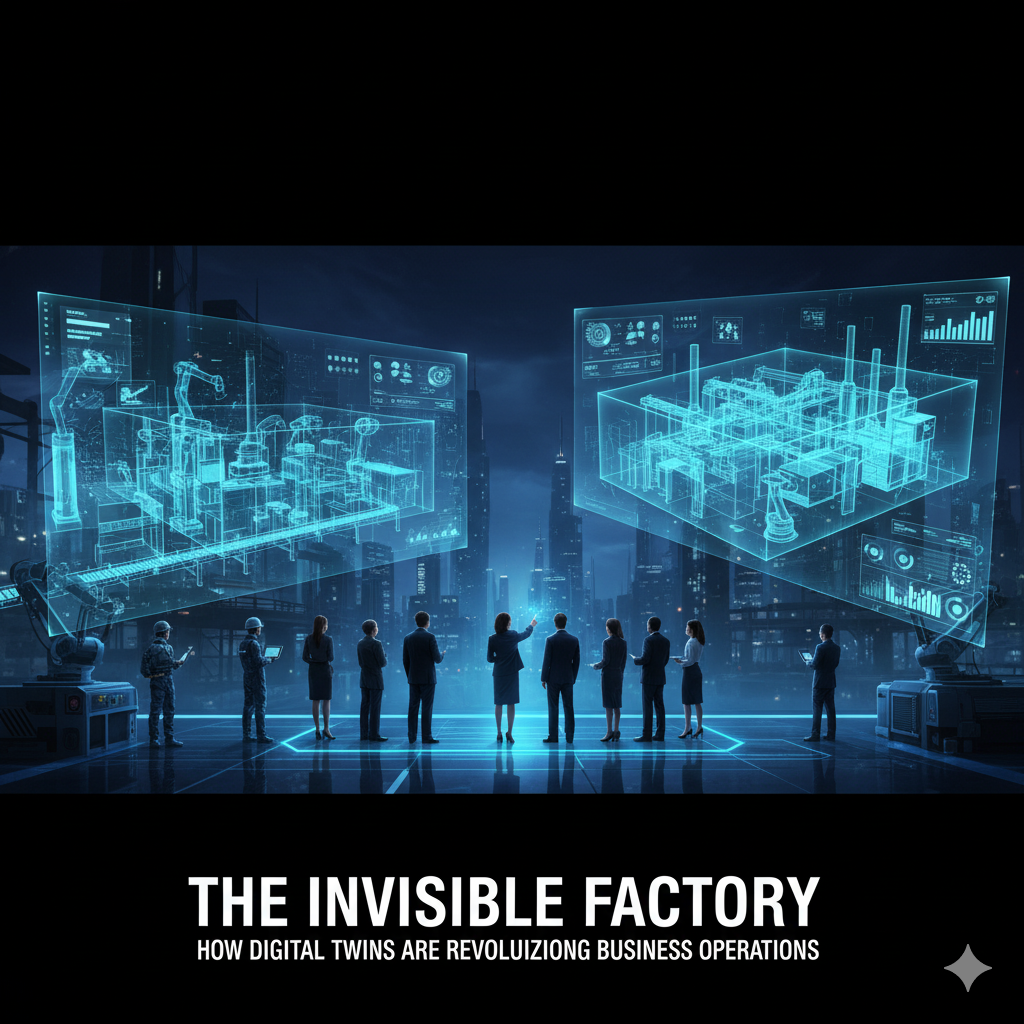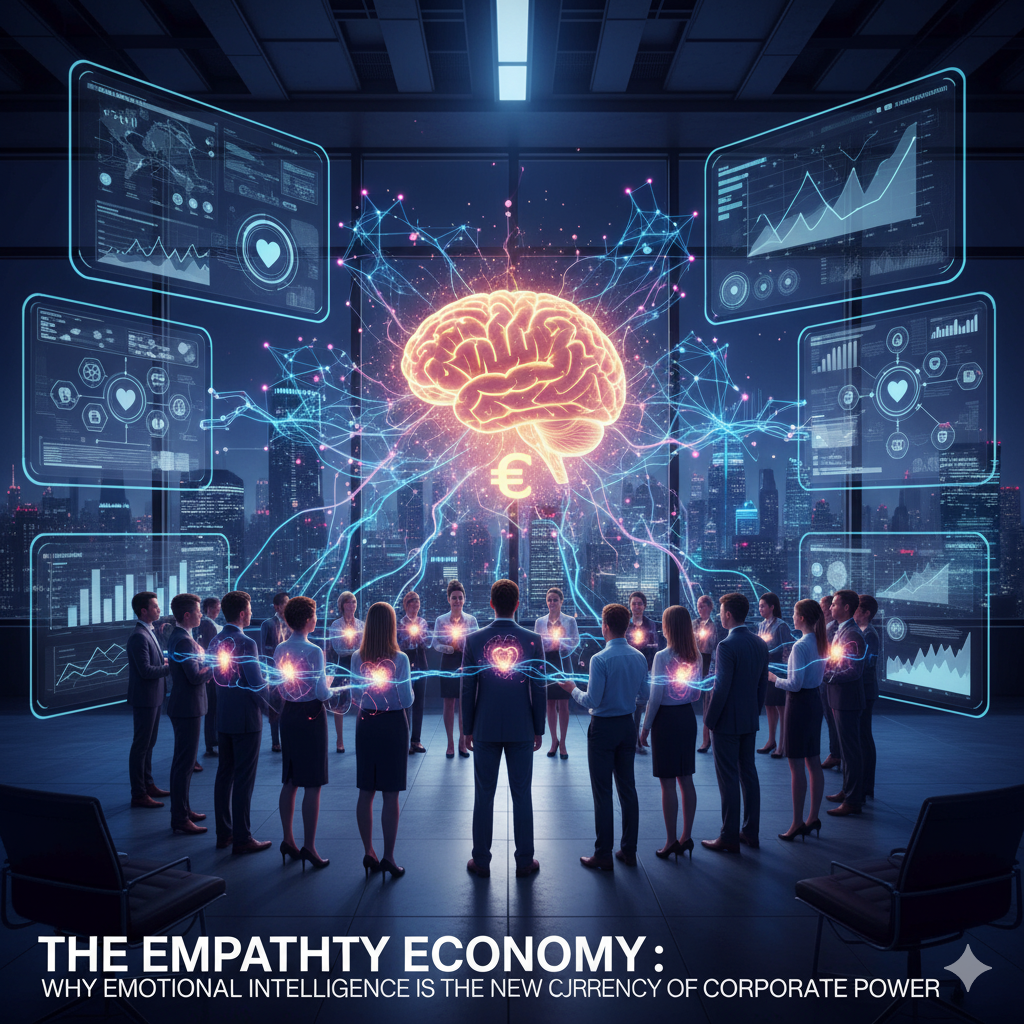For half a century, the dominant business mantra was “globalize or perish.” Supply chains stretched across oceans, corporations sought the lowest-cost labor, and capital flowed freely across borders. This era of hyper-globalization, characterized by just-in-time production and frictionless trade, is over. The triple shock of a pandemic, geopolitical tensions, and climate disruptions has shattered the consensus. We are now witnessing the Great Reconfiguration—a decisive shift from a single, integrated global economy to a world of competing regional blocs. For business leaders, this isn’t a temporary disruption; it is the new, permanent operating environment where resilience will trump efficiency, and regional mastery will be more valuable than global scale.
The Three Fault Lines Fracturing the Global System
This historic shift is not being driven by a single event but by the convergence of three powerful, structural forces.
The Geopolitical Rupture: The war in Ukraine and the strategic competition between the U.S. and China have turned economic interdependence into a vulnerability. Trade is now a tool of national security. The U.S. CHIPS and Science Act, which provides $52 billion for semiconductor manufacturing within its borders, is a stark declaration that control over critical technologies is more important than the cost savings of offshore production. This has triggered a wave of “friend-shoring” and “near-shoring,” where companies are relocating production to politically aligned or geographically proximate countries.
The Resilience Reckoning: The COVID-19 pandemic exposed the profound fragility of elongated supply chains. When a lockdown in Wuhan could halt production in Germany, the efficiency of just-in-time manufacturing revealed itself as a catastrophic single point of failure. Similarly, climate change is causing more frequent and severe disruptions, from droughts paralyzing shipping on the Rhine River to hurricanes shutting down chemical plants in the Gulf of Mexico. Companies are now building redundancy, holding more inventory, and diversifying suppliers, even if it means accepting higher costs.
The Sustainability Imperative: The carbon footprint of global shipping and air freight is coming under intense scrutiny from regulators, investors, and consumers. A product manufactured in Asia, assembled in Eastern Europe, and sold in North America carries a heavy, often hidden, carbon cost. Regionalized supply chains are inherently shorter and greener, aligning with both corporate sustainability goals and emerging carbon border taxes, like the EU’s Carbon Border Adjustment Mechanism (CBAM).
The Rise of the “Tri-Polar” World Economy
The new global order is coalescing around three dominant, semi-autonomous economic spheres, each with its own center of gravity, trade rules, and technological standards.
The Americas Bloc: Centered on the United States, this bloc is reforging supply chains across North and South America through agreements like the US-Mexico-Canada Agreement (USMCA). The goal is to create a hemisphere-wide ecosystem for everything from electric vehicle batteries (with lithium from Chile and Argentina) to semiconductors (with advanced packaging in Mexico and the U.S.).
The European Bloc: The European Union, fortified by its collective response to the energy crisis, is deepening its single market and aggressively pursuing “strategic autonomy.” Through the European Chips Act and the Green Deal Industrial Plan, the EU is using its regulatory and financial muscle to onshore the production of critical goods, from clean tech to pharmaceuticals, reducing its dependence on both the U.S. and China.
The Asia-Centric Bloc: Led by China, this sphere is consolidating through the Regional Comprehensive Economic Partnership (RCEP), the world’s largest free trade bloc. China is leveraging its Belt and Road Initiative to bind countries in Southeast Asia, Africa, and the Middle East into a China-centric network for raw materials, manufacturing, and infrastructure, creating an alternative to the Western-led order.
The Corporate Playbook: From Global to Regional Champions
This new reality demands a radical overhaul of corporate strategy. The “one-size-fits-all” global approach is obsolete. The winning playbook now involves:
-
“In Region, For Region” Manufacturing: The most successful multinationals are building self-sufficient, mini-operations within each major bloc. A company like Toyota no longer builds a single model in one mega-factory for global export. It produces the Camry in Kentucky for North America, the Corolla in Thailand for Southeast Asia, and the Yaris in France for Europe. Each regional hub has its own localized supply chain, insulating it from disruptions elsewhere.
-
The “Multi-Domestic” Talent Strategy: The war for talent is also going regional. Companies can no longer rely on a central HQ to dictate culture and process. They must empower local leadership, adapt to regional labor laws and workplace norms, and develop talent pipelines within each bloc. A leadership style that works in Silicon Valley may fail spectacularly in Stuttgart or Shenzhen.
-
The Rise of Regional Champions: This environment creates a golden opportunity for strong local companies that deeply understand their home turf. While global giants are distracted by the complexity of managing three separate systems, a regional player like India’s Reliance Industries or Latin America’s Mercado Libre can dominate its market by being more agile, more culturally attuned, and less exposed to geopolitical crossfire.
The Investment Implications: A New Map for Capital Allocation
For investors, the reconfiguration of the global economy redraws the map of opportunity and risk.
-
The Demise of the Pure Global Index Fund: A passive strategy that simply buys a global index is now a bet on a bygone era. Investors must be more deliberate, overweighting regions with strong internal growth dynamics and stable political environments. This might mean a dedicated allocation to ASEAN markets or North American industrial and logistics REITs.
-
The “Re-shoring” and “Near-shoring” Winners: A massive capital expenditure cycle is underway as companies build new factories and warehouses closer to home. This benefits:
-
Industrial Real Estate: Warehouse and factory owners in nearshoring hotspots like Mexico and Eastern Europe.
-
Engineering and Construction Firms: Companies that build the new infrastructure.
-
Automation and Robotics Providers: As labor costs rise in nearshore locations, companies will invest heavily in automation to maintain margins.
-
-
The Logistics Re-think: The companies that move goods are facing their own revolution. The boom in long-haul container shipping may slow, while regional air freight, rail, and trucking within the blocs will see growth. Logistics giants like Maersk and DHL are already pivoting from being global movers to becoming managers of complex regional ecosystems.
Case Study: The Great Auto Industry Reset
The automotive industry provides a perfect microcosm of the broader trend. For years, it was a poster child for globalization, with parts crisscrossing the world. Today, it is fragmenting along regional lines.
-
In North America, the U.S. Inflation Reduction Act provides massive subsidies for EVs and batteries made on the continent. This has triggered a wave of investment from Ford, GM, and Hyundai to build new EV and battery plants in the U.S., Canada, and Mexico.
-
In Europe, the EU’s impending ban on combustion engine cars and its strict rules of origin are forcing automakers like Volkswagen and Stellantis to localize their EV supply chains within Europe to avoid tariffs.
-
In China, the government’s dominance over the battery supply chain and its vast domestic market have created a self-contained EV ecosystem, led by companies like BYD, that is increasingly decoupled from the West.
Strategic Outlook: Navigating a Less Efficient, More Resilient World
The transition to a regionalized world will be messy and inflationary. The efficiency gains of globalization acted as a deflationary force for 30 years. The reversal of that process means higher costs for goods, more complexity for managers, and greater volatility for investors.
However, this new world also offers compelling advantages: greater resilience, stronger communities, and a more sustainable model of commerce. The companies that will thrive are those that stop lamenting the end of the old era and start aggressively building for the new one. They will be the ones who see regionalization not as a threat, but as the defining business opportunity of the 2020s.
Conclusion: The End of the Beginning
The age of hyper-globalization is over. We are now at the beginning of a new chapter—the age of regionalization. This is not a retreat from the world, but a reorganization of it. It demands a new kind of corporate leader: one who is a master of geopolitics as much as of finance, a builder of regional networks rather than just global brands, and a strategist who values security over slim margins.
The map of the world economy is being redrawn. For those with the vision to read it, the opportunities are vast. The future belongs not to the last giants of globalization, but to the first champions of the regional age.











